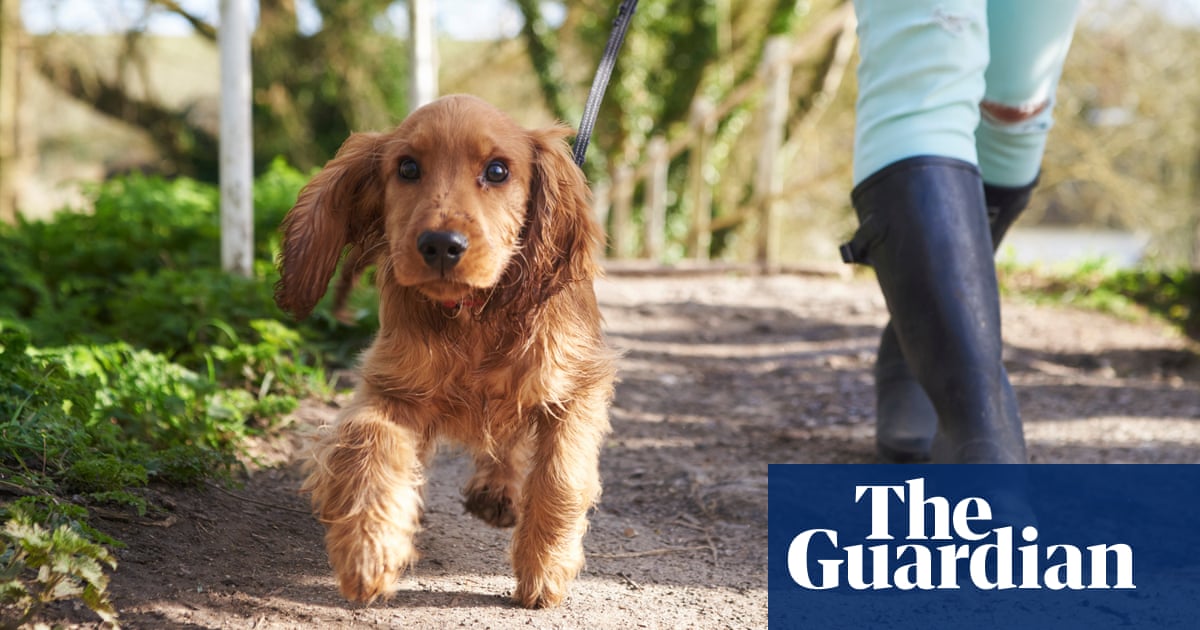- May 28, 2022
- No Comment
- 8 minutes read
Separation anxiety: how to manage your pet’s mental health as post-lockdown routines resume – The Guardian

Experts say demand for wellness and calming products for animal companions have surged since Australia’s restrictions lifted
When Melburnian Anni O’Donnell used to arrive home from work, her sausage dog, Ziggy, would be excited to see her. Since lockdown, though, “he cries and wiggles his body for a good five minutes”.
“He even does it for short periods of time, like a five-minute pop to the shops,” O’Donnell said.
“I already worried about leaving him for long stretches pre-Covid but now I’m so used to him by my side it feels weird without him. I have the guilt of knowing he has worse separation anxiety on top of missing him.”
Three-year-old Ziggy is one of many “pandemic puppies” grappling with separation anxiety as lockdown restrictions ease and their owners return to the office and socialise more – leading to a spike in demand for health and wellness products for pets.
Greencross Vets veterinary surgeon Dr Lucy Asher said she’d seen many pandemic puppies who’d never been left alone or learnt independence, which was provoking pet owners to turn to the market for help.
“There are also many dogs who were happy being left alone but who had adapted to having owners constantly present,” she said.
“We’re also seeing a rise in aggression due to lack of socialisation during the critical socialisation period.”
In the past year, $269.8m was spent on alternative health treatments for dogs – including acupuncture and massage. Now, anxiety and calming products such as “relax care” treats, home diffusers, on-the-go collars and “thundershirts” are flooding the market.
Australian retailer Petbarn has seen a 59% increase in purchases for anxiety and calming products since Victoria came out of lockdown, and a 51% increase since New South Wales emerged from restrictions.
Sign up to receive an email with the top stories from Guardian Australia every morning
Hi-tech communication options are also being promoted to help dogs tackle separation anxiety themselves. A new product – coined the DogPhone – uses a soft ball that, when moved, allows canines to call their owners from home.
Australian Veterinary Association spokesperson Dr Isabelle Resch said managing pets’ mental health would be an “ongoing issue” as people returned to work and socialising.
“Young puppies are not used to having periods of separation, and it can be a difficult transition from having an owner home 24/7 to being at work 40+ hours per week,” she said. “This is likely to be an ongoing and potentially increasing problem.”
A spike in Australians seeking animals for companionship during lockdowns also contributed to the pet care industry growth. Some 69% of Australian households now own at least one pet, in large part due to a surge in dog ownership in the past two years. This, combined with a trend towards “pet humanisation” – whereby furry friends are viewed as family members – has seen pet expenditure boom in the past five years.
Email: sign up for our daily morning briefing newsletter
App: download the free app and never miss the biggest stories, or get our weekend edition for a curated selection of the week’s best stories
Social: follow us on YouTube, Facebook, Instagram, Twitter or TikTok
Podcast: listen to our daily episodes on Apple Podcasts, Spotify or search “Full Story” in your favourite app
Health and wellness products for pets have been a burgeoning industry since before the pandemic began. But Covid-induced lockdowns seeing more pet parents working from home led to even further market growth, particularly for gourmet meals and treats.
Animal Medicines Australia estimated dog owners spent $20.5bn on their pets during the pandemic, while cat owners spent $10.2bn.
IBISWorld forecasts while spending on pets will continue to rise in the coming years, competition will also intensify, due to a greater demand for high-quality premium pet food and preventative healthcare medications for increasingly indulged pets.
O’Donnell said since Covid, Ziggy had become a regular at the pet store, and was “desperate” to enter anytime her and her partner walked past.
“I’d say I go once a fortnight to top up,” she said. “Is my dog spoiled? Definitely.”
RSPCA Australia senior scientific officer Dr Sarah Zito said the dramatic changes in routine post-lockdowns could be “stressful” or “confusing” for dogs not accustomed to being left alone, particularly for puppies purchased during the pandemic.
These are some expert tips to help pandemic puppies cope with separation:
Recognise your dog will have more time alone, so teach independent time gradually. Start with five to 10 minutes with a yummy treat, and slowly increase your distance from the dog and time it’s left alone. Some dogs will be better able to cope than others – genetics do play a big role in their propensity to anxiety.
When leaving the home and arriving back, stay calm and quiet to make the occasion as boring as possible. This teaches dogs it’s nothing to get excited or anxious about.
Use food puzzles and treats that take time to eat – try to pair this with departures from home.
Consider using doggy day care or family help during the transition to work.
Slow down the return from working at home every day to working in the office full time, and try and modify your home routine to be similar to what the return to work or school will look like. This means feeding, exercising and toileting your dog on a similar schedule.
When dogs are alone, give them a special treat to keep them occupied and build positive associations with it, like safe toys to cuddle, play with or chew.
If pets aren’t transitioning well, see a vet to manage their behaviour, as they may need medication to reduce anxiety. Signs of stress include toileting in the house, howling, barking or whining, destruction and excessive drooling or panting.

